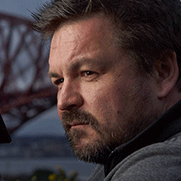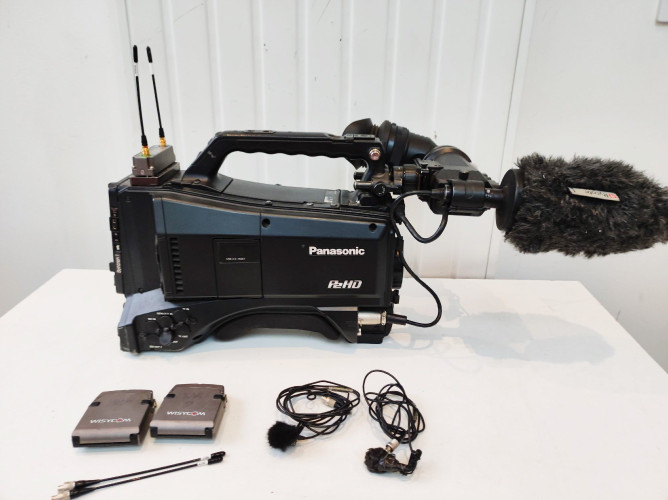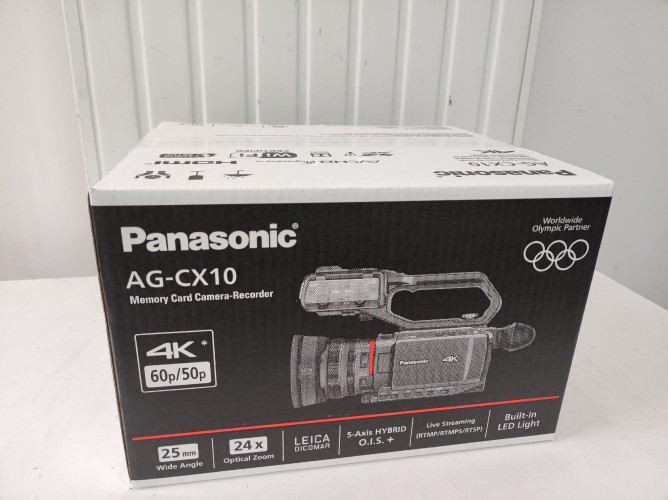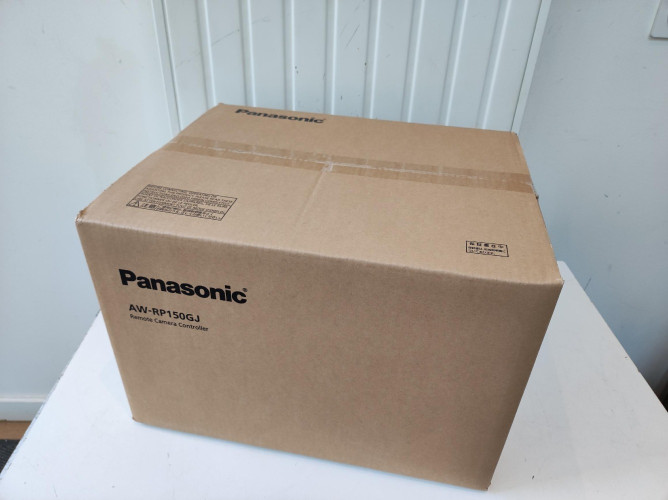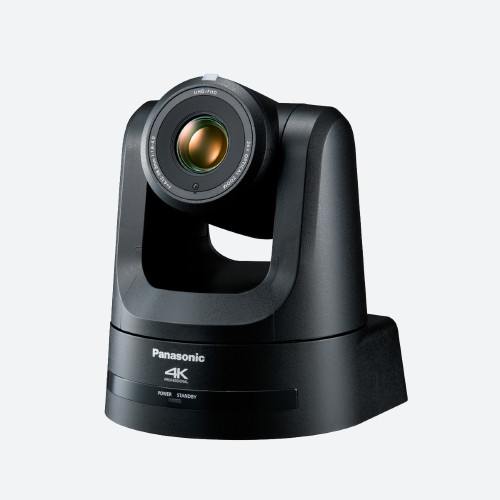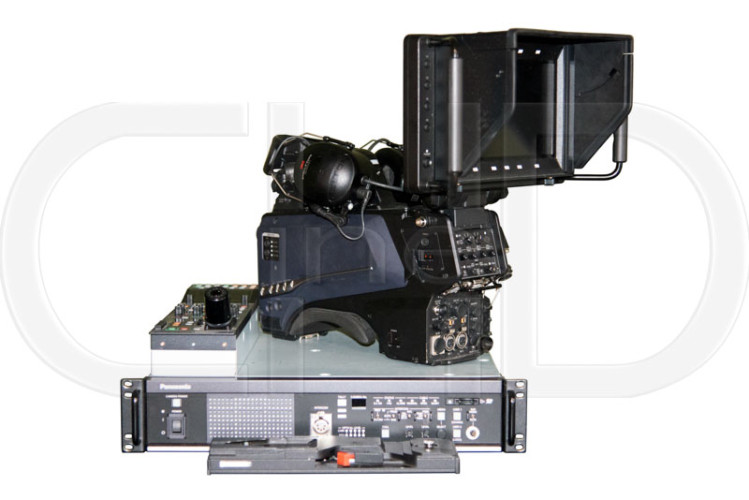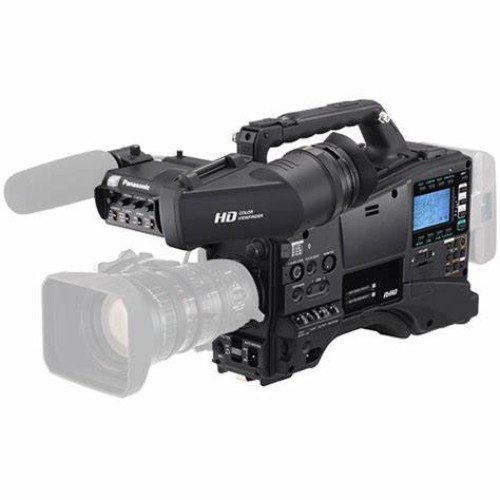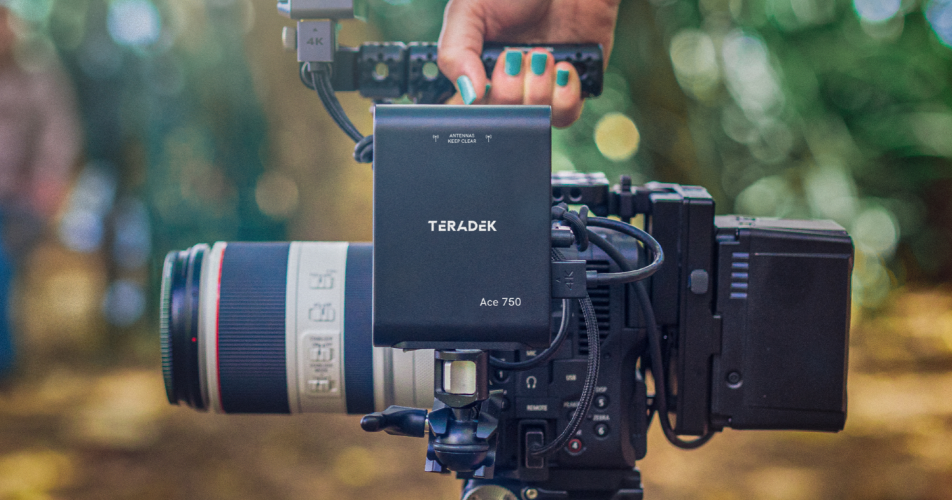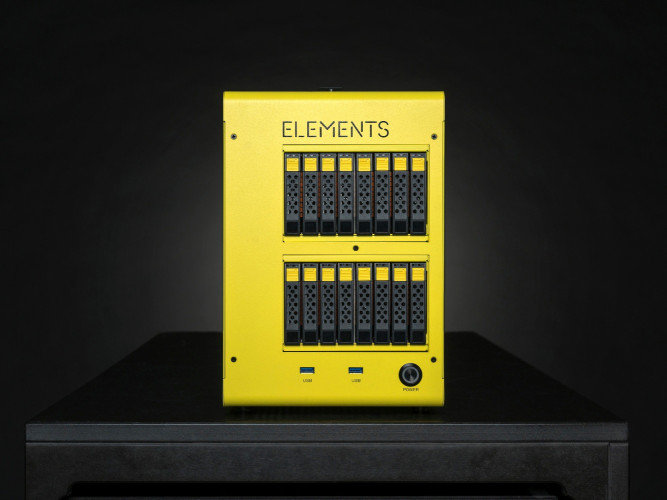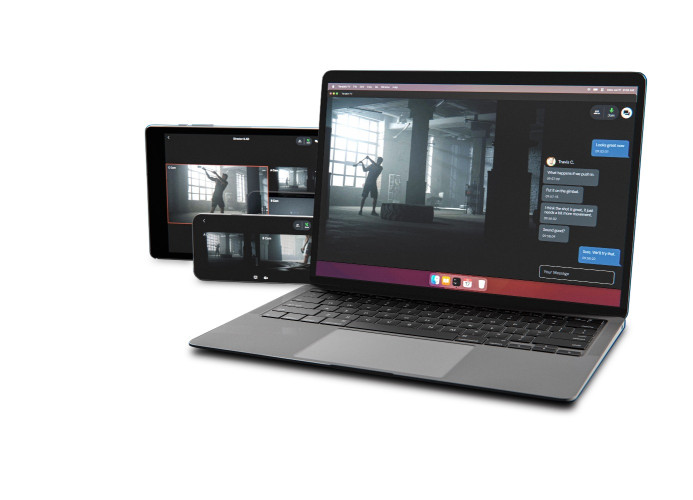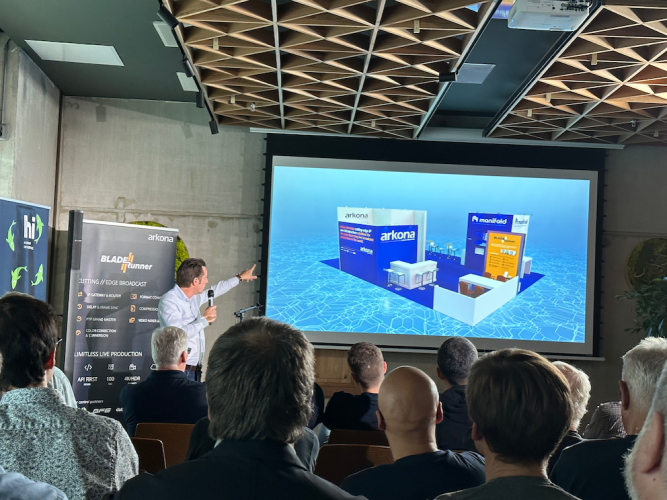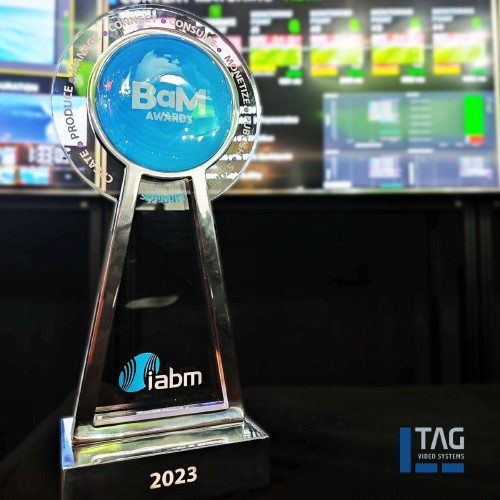by Den Lennie
Issue 82 - October 2013 Den hosted a half-hour live show from our studio at IBC in Amsterdam where he talked to Nigel about the latest developments from Panasonic. You can find the full show on our website at http://broadcastshow.com/live
Tell me whats new at Panasonic.
Okay, when we talked last, we spoke about a new camera called the PX5000. That camera has been launched and we start to ship it at the end of October. This camera is very significant for us as its the next big step in our AVC-Intra story. Weve also now taken P2 as a format to 200 megabits and as AVC-Ultra is now here were ready to go with it. But to add to it, weve also got things like AVC-LongG (or LongGOP as the industry knows it) so basically going from 6 megabit up to 50 megabit and everything in between. So that camera is out there and theres lots of interest. But weve also launched its little brother the PX270. This new handheld has three 1/3-inch MOS blocks, AVCUltra offering 200meg.
So what does that mean in reality? We had 100 megabits which is pretty good, what is the significance of 200 megabits?
It means now that we can start to diversify. Obviously youre getting better quality, still running at HD resolution but youre getting less compression onto the cards. We also now have Micro P2. Weve talked about this at various shows and it looks like an SD card - but on the back it has a dual gold connection. With the PX270, you can either put it into the adapter or straight into the MicroP2 card slot. This allows us to record 200 megabits as well. The restriction weve had with SD cards is 50 megabit we couldnt do it. What were seeing now instead is a shrunk down P2 card.
So it might look like an SD card but its the engine inside which was always the case with P2. It looked like a PCMCIA card, but actually it was what was happening on the chip that made the difference.
Exactly, our biggest thing has always been to supply the same format on every camera. Panasonic believe that you should never buy the camera because of the format itself, it should be bought because of budget, sensitivity, size and everything else. So when the PX270 comes out in March 2014 youll be able to shoot exactly the same format as its bigger brother, the PX5000.
So its the perfect companion camera. And where do you see this being used?
Everything from news organisations who need something thats smaller and they dont want a shoulder camera out there in the front line, to documentaries, to Natural History, and even the guy at home who has a lot of budget and wants to get out there and shoot something.
Youve got a big legacy with Natural History thats obviously something thats very important to Panasonic. How is this camera going to benefit those kinds of guys?
I think its taking them to the next step. They currently use PX250s and allowing them to shoot less compressed obviously helps them because the footage that they gather is there for history they use it for a lot of archive footage. So the quality is getting better.
In Natural History - they might be out in the jungle somewhere, see a unique bird and its a one-time shot. So presumably, having the highest possible quality means theres no compromise its going to sit in the archive for a long time.
One of the big things about it is sensitivity. There is a famous shot in Planet Earth where there is a black bird of paradise hopping around on the floor of the jungle. When he turns around and opens his wings up there is an electric blue strip that goes right the way through and they couldnt capture it before because film wasnt sensitive enough to do it. If you remember, with our VariCam the sensitivity was so high that they came away with footage that had never been caught.
Do these cameras have any off-speed recording capabilities?
We are of course working on this one. If there will be any variable frame rate, it will be stepped. It wont be like the old VariCam where you could crank it right up.
While were on this transmission here were being recorded by remote camera heads. Still an important part of your business?
Its probably one of our fastest growing areas. Currently were sat here being looked at by our HE120 PTZ camera. To give you an idea, this is probably about 180% growth on last year, multi camera for us is a big area. Weve launched more kit, more switchers and mixers for people to look at.
Everyones buzzing about 4K. Wheres Panasonic with 4K?
We have investigated it for a while, because if you look at the 4K area at the moment there are quite a lot of offerings about 4K. Some are true 4K, some are maybe not so true. We have a legacy, which is the VariCam. So were now in that process of building and designing two VariCams the first one will be launched at NAB and well probably see a working production unit in maybe October next year. That will be very similar to the VariCam that people have known in the past shoulder mounted, something to take out of the box and get out there to shoot.
Then there is the 4K VariCam which is taking a little bit more work because we want to get it right. If were going to bring out a 4K camera and put our VariCam logo on there it needs to offer something special to the industry because thats where we did very well. VariCam is different. It offered film look, variable frame rates and was all progressive. So weve got to take that legacy and get that into what will be the ideal follow on from VariCam.



